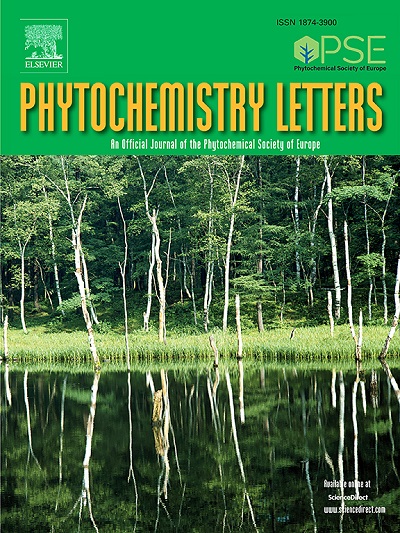Capillary electrophoresis as a green and rapid technique for the quantification of caffeic acid phenethyl ester (CAPE): Correlation between CAPE contents and anti-inflammatory activities of propolis extracts
IF 1.4
4区 生物学
Q4 CHEMISTRY, MEDICINAL
引用次数: 0
Abstract
Caffeic acid phenethyl ester (CAPE) is propolis's most notable bioactive compound. Since CAPE has many pharmacological properties, the bioactivities of propolis can mostly be attributed to its CAPE content. As the administration of propolis extracts to the body for therapeutic purposes increases, reliable determination of the CAPE content of the extracts becomes important. This study developed a green micellar electrokinetic chromatography (MEKC) method to determine the CAPE amount in propolis extracts rapidly. The method was applied for the determination of CAPE amounts in commercial propolis spray samples and two propolis samples collected from beekeepers in Anatolia. Moreover, the anti-inflammatory activities of propolis samples were measured based on the in-vitro inhibitory activity of the tumor necrosis factor-α (TNF-α) enzyme. The correlation between the amount of CAPE and the anti-inflammatory activities of the samples was investigated and found to be 0.90. This high correlation indicates that CAPE has an important role in the anti-inflammatory effect of propolis.
毛细管电泳作为一种绿色快速定量咖啡酸苯乙酯(CAPE)的技术:CAPE含量与蜂胶提取物抗炎活性的相关性
咖啡酸苯乙酯(CAPE)是蜂胶中最显著的生物活性化合物。由于CAPE具有许多药理特性,蜂胶的生物活性主要归因于其CAPE含量。随着用于治疗目的的蜂胶提取物对人体的管理增加,可靠的测定提取物的CAPE含量变得重要。建立了绿色胶束电动色谱(MEKC)快速测定蜂胶提取物中CAPE含量的方法。本方法应用于商业蜂胶喷雾样品和两种来自安纳托利亚养蜂人蜂胶样品中CAPE的测定。此外,通过对肿瘤坏死因子-α (TNF-α)酶的体外抑制活性测定蜂胶样品的抗炎活性。研究了CAPE的含量与样品抗炎活性的相关性,发现相关性为0.90。这种高相关性表明CAPE在蜂胶的抗炎作用中起重要作用。
本文章由计算机程序翻译,如有差异,请以英文原文为准。
求助全文
约1分钟内获得全文
求助全文
来源期刊

Phytochemistry Letters
生物-生化与分子生物学
CiteScore
3.00
自引率
11.80%
发文量
190
审稿时长
34 days
期刊介绍:
Phytochemistry Letters invites rapid communications on all aspects of natural product research including:
• Structural elucidation of natural products
• Analytical evaluation of herbal medicines
• Clinical efficacy, safety and pharmacovigilance of herbal medicines
• Natural product biosynthesis
• Natural product synthesis and chemical modification
• Natural product metabolism
• Chemical ecology
• Biotechnology
• Bioassay-guided isolation
• Pharmacognosy
• Pharmacology of natural products
• Metabolomics
• Ethnobotany and traditional usage
• Genetics of natural products
Manuscripts that detail the isolation of just one new compound are not substantial enough to be sent out of review and are out of scope. Furthermore, where pharmacology has been performed on one new compound to increase the amount of novel data, the pharmacology must be substantial and/or related to the medicinal use of the producing organism.
 求助内容:
求助内容: 应助结果提醒方式:
应助结果提醒方式:


